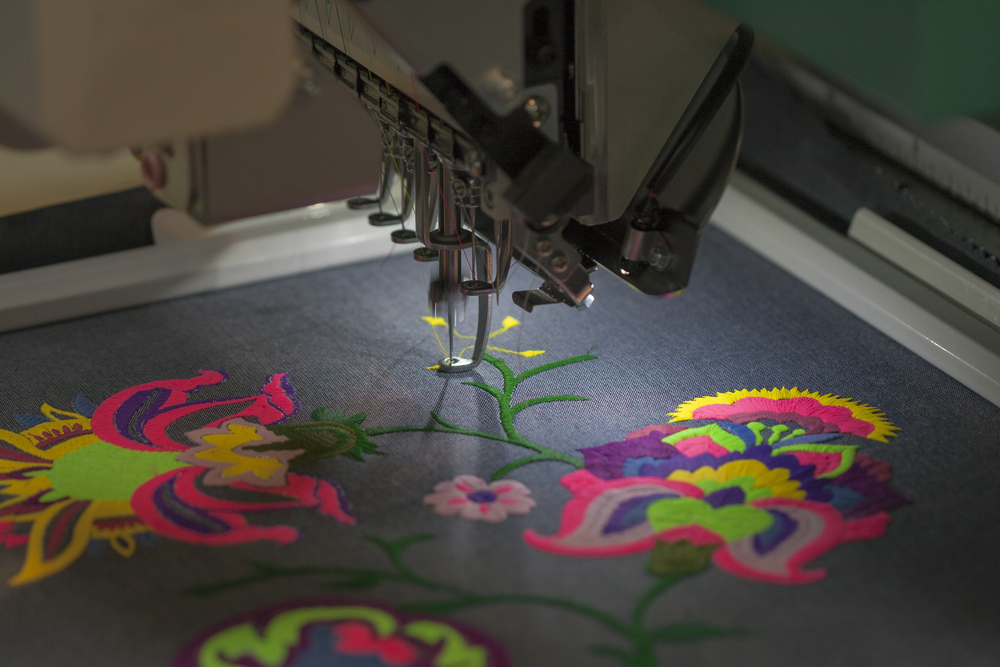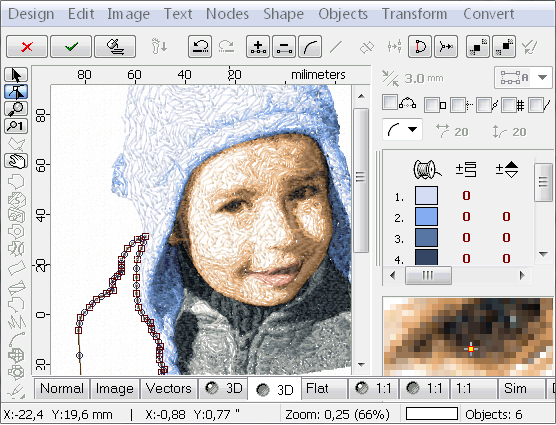Efficient Digitizing for Embroidery: Quick Turn-around
Efficient Digitizing for Embroidery: Quick Turn-around
Blog Article
Understanding the Embroidery Digitizing Process: Your Ultimate Overview
Needlework digitizing is a thorough craft that requires precision and knowledge to equate intricate designs into digital formats for equipment embroidery. As craftsmens get started on this journey to understand the embroidery digitizing procedure, a comprehensive understanding of the basics sets the structure for excellence.

Recognizing Embroidery Digitizing Fundamentals
Needlework digitizing fundamentals form the structure whereupon complex styles are converted right into machine-readable formats for accurate stitching. This first step in the needlework digitizing procedure is vital for guaranteeing that the final stitched product is a devoted depiction of the original style. Comprehending embroidery digitizing fundamentals includes comprehending vital principles such as stitch types, sew direction, thickness, padding, and draw settlement.
Stitch types play an important role in establishing the aesthetic and textural result of the stitched layout. By choosing the appropriate stitch kind, whether it be satin, fill, or running stitch, digitizers can achieve the desired impact and enhance the overall high quality of the needlework. Furthermore, sew direction influences the flow and dimension of the style, while thickness figures out the spacing and coverage of the stitches.
Furthermore, underlay stitching provides security to the layout by safeguarding the fabric and avoiding distortion throughout the needlework procedure. Draw payment is an additional important factor to consider to counteract the natural tendency of material to agreement when sewn. Understanding these embroidery digitizing essentials is essential for producing professional-quality embroidered items.
Choosing the Right Digitizing Software Application
Choosing the suitable digitizing software program is an essential decision that substantially influences the efficiency and quality of the needlework digitizing process. Digitizing for Embroidery. When picking the right digitizing software, it is important to consider variables such as the complexity of styles you plan to develop, the user-friendliness of the software program, the degree of consumer assistance supplied, and the compatibility with your embroidery equipment
There are numerous digitizing software application options offered in the marketplace, varying from standard programs for newbies to advanced software application for specialist digitizers. Some prominent options include Wilcom EmbroideryStudio, Hatch Needlework Software Application, and PulseID. These software program plans provide a vast variety of devices and attributes to help you develop detailed layouts with simplicity.
Before making a decision, it is recommended to check out the various software application options via complimentary tests or demonstrations to identify which one finest matches your needs. Furthermore, checking out testimonials and looking for suggestions from skilled digitizers can provide beneficial insights into the staminas and weak points of each software (Digitizing for Embroidery). By carefully reviewing your demands and comparing the features of different digitizing software, you can make an enlightened option that boosts your embroidery digitizing process
Digitizing Devices and Techniques

Optimizing Design Settings for Embroidery
Understanding the complexities of design setups is fundamental in accomplishing ideal results in the embroidery digitizing process, structure upon the foundation laid by understanding digitizing devices and techniques. When optimizing style settings for needlework, it is important to consider aspects my sources such as stitch kind, thickness, padding, draw payment, and enrollment. Enrollment setups align various elements of the style precisely, preserving total layout integrity.

Troubleshooting Common Digitizing Issues
When running into usual digitizing issues during the embroidery process, it is important to understand the origin and execute reliable solutions immediately. One typical trouble is stitch density issues, where stitches may be also dense, creating the textile to pucker, or too sporadic, leading to spaces in the layout. Readjusting the stitch density setups in the digitizing software can help settle this concern.
Another regular challenge is thread breaks during the needlework process. This can take place because of different reasons such as incorrect stress settings, plain needles, or making use of low-grade string. Guaranteeing correct maintenance of the needlework device, consisting of regular needle modifications and stress changes, can decrease the event of string breaks.
Furthermore, design enrollment mistakes can cause misaligned components within the needlework design. Inspecting the design placement in the digitizing software program and making required modifications prior to sewing can help in avoiding this concern. By attending to these typical digitizing problems immediately and effectively, you can guarantee a smoother embroidery procedure and premium ended up items.
Verdict
In verdict, mastering the needlework digitizing process requires a solid understanding of the basics, the right choice of software, and important site knowledge of devices and methods. Enhancing design setups and repairing usual digitizing concerns are vital steps in ensuring high-quality needlework results. By adhering to these steps diligently, one can attain precision and performance in the digitizing procedure.
Report this page